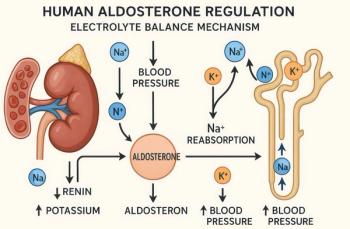
Dose-Adjusted DOACs: What Efficacy vs Warfarin?
Patients who require dose adjustment when taking direct oral anticoagulants have not been well studied. This large study is a good start.
The direct oral anticoagulants (DOACs) offer distinct advantages over warfarin – among them, dose adjustment is only needed in cases of impaired renal function, advanced age, low body weight, or potential for drug-drug interactions. Incidentally, these factors (ie, older age or chronic kidney disease) can also increase the risk of ischemic stroke and of bleeding. Thus, the safety and efficacy profile of DOACs vs warfarin in the subgroup of patients on a reduced dose of the former could be different from that seen in the general population. This situation has not been previously well described as these patients are mostly under-represented in the landmark large randomized trials that led to the approval of these drugs.
Looking at a large Danish cohort group (from three nationwide registries),
While there was no statistically significant difference in the rate of ischemic stroke and systemic embolism in an inverse probability treatment-weighted analysis for all three DOACs vs warfarin, there was a trend towards a higher rate of the endpoint for apixaban (4.8%) over dabigatran (3.3%), rivaroxaban (3.5%) and warfarin (3.7%). Similarly, there was no statistically significant difference in weighted bleeding outcomes but there was a trend towards lower bleeding in the dabigatran group (4.1%) vs warfarin (5.1%), compared to apixaban (5.1%) and rivaroxaban (5.6%), which were similar to warfarin.
Interesting insights from this study:
1) In this high-risk population, with a high CHA2DS2-Vasc score the rate of ischemic stroke and bleeding over study follow-up was relatively high compared to standard population (~4-5%).
2) There is significant variability among the dose-adjusted DOACs, with dabigatran being the most frequently used dose-adjusted DOAC in patients who require lower doses.
3) There is no statistically significant difference in efficacy or safety of dose-reduced DOAC vs warfarin although apixaban seemed to consistently have a (statistically nonsignificant) trend towards a higher rate of ischemic stroke (even in sensitivity analyses of elderly patients or those with AF diagnosed in hospital).
4) Rates for bleeding were not statistically significantly different for apixaban and rivaroxaban compared with warfarin but there was a trend towards lower rates with dabigatran.
When interpreting these results, keep in mind that although the study is large, the majority of the patients were treated with warfarin, the minority with a dose-reduced DOAC, which may limit the study’s power to detect statistically significant differences. In addition, the significant variability in the baseline characteristics (age, sex, CHA2DS2-Vasc score) within both groups, even with the use of propensity matching, subjects these results to residual confounding (as is the case with all observational studies). Pending randomized controlled trials, this study does offer preliminary insights into the safety and efficacy of dose-reduced DOACs. Additional studies with larger numbers of patients on DOACs are needed, however, to validate these findings.
Reference:
Brønnum NP, Flemming S, Mette S, et al.
Newsletter
Enhance your clinical practice with the Patient Care newsletter, offering the latest evidence-based guidelines, diagnostic insights, and treatment strategies for primary care physicians.



















































































































































































































































































